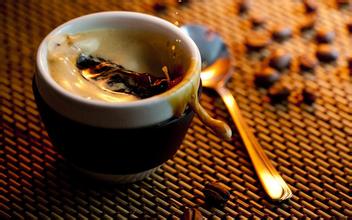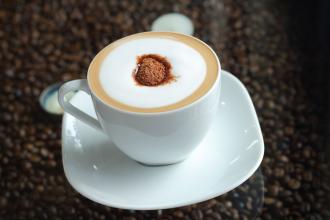Caffeine content of Liberian Coffee Bean
Caffeine content of Liberian Coffee Bean
1. Summary: coffee is a perennial evergreen shrub or small tree of Rubiaceae. Native to tropical Africa, it has been cultivated for more than 2000 years. Arabs began to grow coffee in 525 BC. Arabs are popular to stir-fry coffee beans, which began to be planted on a large scale after the 15th century. it is widely distributed in tropical and subtropical regions of Europe, Asia, Africa and Latin America after the 18th century, and has become the first of the three major beverage crops in the world.
two。 Uses: coffee beans are an important raw material for making beverages. Coffee drinks are widely consumed all over the world and are deeply loved by people. Coffee beans are also pharmaceutical raw materials. Caffeine can be extracted and used as anesthetics, diuretics, stimulants and cardiotonic agents.
3. Processing: (1) dry method: this method is simple, generally can be dried by sun-drying or electric oven, and after drying, the commercial coffee beans can be obtained by shelling and peeling off the pericarp and seed shell and sieving impurities.
Also known as Liberian species, evergreen trees. The plant is tall, more than 10 meters high, the branches are thick and hard, grow obliquely upward, and the branches cork the fastest. The leaf blade is oval or round, the leathery leaf surface is glossy, the leaf end is closed, and the leaf margin is not corrugated. The fruit is large, oblong, the skin and pulp are hard and thick, the navel is large and protruding. The ratio of fresh fruit to dried bean is about 7: 10. The seed shell is thick, hard and tough, the seed coat is close to the seed kernel, the bean grain is large, and there are about 1300 beans per jin. The ripe fruit is scarlet. The branches bear less fruit, and the number of fruits per node is about 5-6. The main root of this species is deep, drought-resistant, wind-resistant, cold-resistant, light-resistant, and most susceptible to rust. The yield per plant is high and the yield per unit area is low. Strong flavor and strong irritation.
The main varieties are Esselsa (also called Charley), which was introduced from Guangxi to Hainan in the 1970s. The fruit is vigorous, but the seed coat is thick and hard like a small seed, the ratio of fresh to dry is 5: 8, and the quality is strong and slightly bitter. It has deep roots, strong drought and cold tolerance, and is resistant to leaf rust and longicorn beetles.

Important Notice :
前街咖啡 FrontStreet Coffee has moved to new addredd:
FrontStreet Coffee Address: 315,Donghua East Road,GuangZhou
Tel:020 38364473
- Prev

Introduction to the characteristics of varieties produced by taste grinding scale of Arusha coffee beans
The characteristics of Arusha coffee beans produced by grinding scale varieties Kona Extra fancy kona beans in Hawaii, which is considered to be one of the best coffee producing areas in the world, must cover six important factors: soil quality, altitude, sunshine, cloudiness, rainfall and slope. Hawaii is blessed with these six elements to produce the best in the world and
- Next

Why only coffee in Asia uses semi-water washing-honey treatment of coffee beans and sun washing
Why do only Asian coffee use semi-washing-honey-treated coffee beans sun-washed coffee is either dried naturally on the patio, or dried by machine, or both. The treatment is to spread the coffee cherries widely on the exposure field for two weeks and sweep them with a rake several times a day so that the coffee beans can be dried more evenly. When dried, the coffee beans will match
Related
- Guji coffee producing area of Guji, Ethiopia: Humbela, Shakiso, Wulaga
- What is the most expensive variety of Qiloso in BOP multi-variety group?
- How to store the coffee beans bought home?
- Why are Yemeni coffee beans so rare now?
- Ethiopian Sidamo all Red Fruit Sun Sun Santa Vini Coffee beans
- SOE is mostly sour? What does it mean? Is it a single bean? what's the difference between it and Italian blending?
- Is Italian coffee beans suitable for making hand-brewed coffee?
- How to choose coffee beans when making cold coffee? What kind of coffee beans are suitable for making cold coffee?
- Just entered the pit to make coffee, what kind of coffee beans should be chosen?
- Can only Japan buy real Blue Mountain Coffee? What are authentic Jamaican Blue Mountain coffee beans?

